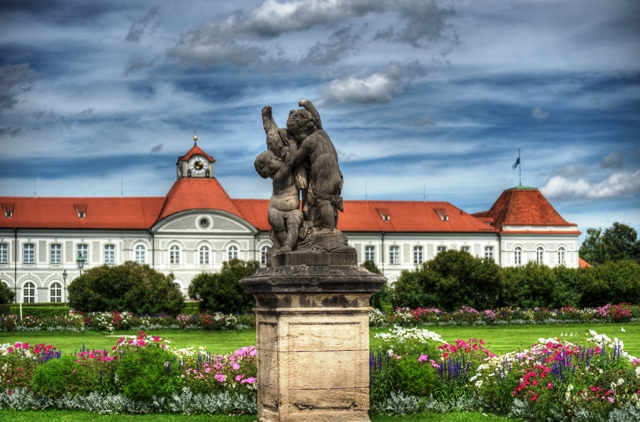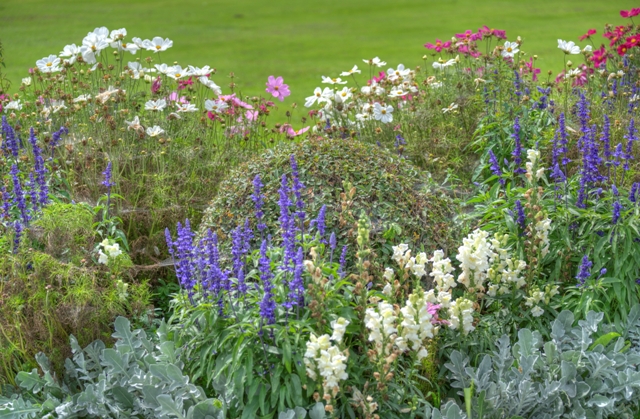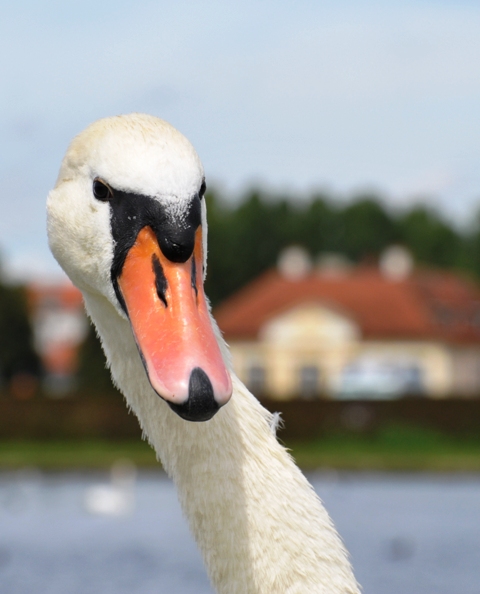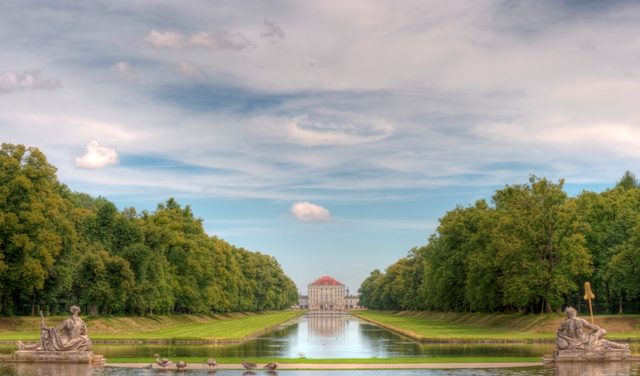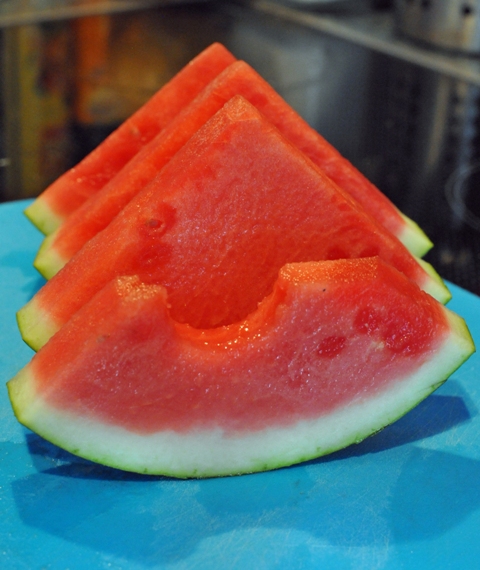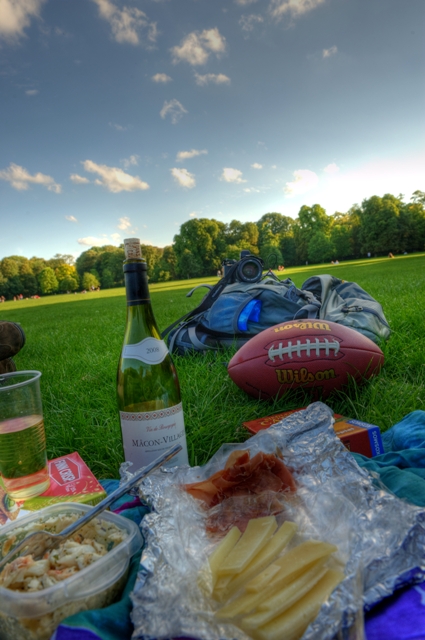Cooking Thai Food: Pomelo Salad
 Friday, August 26, 2011 at 9:01
Friday, August 26, 2011 at 9:01 It's hard to name a favorite Thai dish, but I'm pretty certain that Pomelo Salad (yam som-o) gets my vote for #1. Unfortunately it isn't one that is served widely outside of Thailand. Sad, because it's one of those dishes that blends together all of the flavors and textures into a well-balanced delicious dish.
If you want to try the real thing, Baan Khanitha in Bangkok makes the best one I've ever had. Then again, they make almost everything incredibly well. I highly recommend a feast there!
As with other Thai "salads," this is a main dish that you enjoy with your other dishes family style, not a side salad in the US/European style. It's great with some satay and a fish dish.
These days pomelos are available throughout the US and Europe, and the other ingredients all are readily available at any Asian grocery store. When it's just Herr J and I eating it, I take a few shortcuts, since peeling the pomelo is enough work: buy roasted chicken from the deli counter and buy the fried garlic and shallots rather than cooking them anew each time. You could also fry up batches and store them, which is what I do with roasted peanuts and toasted coconut. Except for the meat, fruit, and herbs, you can keep most of the ingredients on hand in the pantry. Unless I'm going to use a whole can of coconut cream cooking something else, I usually cheat a little and mix up some from powdered coconut milk. It works fine where used as a flavoring, but I would recommend using the liquid for curries and other coconut milk-based dishes.

Though it's an impressive tasting dish and a daunting ingredient list, it's a surprisingly simple dish to make and one that requires no real cooking.
The first step is finding and peeling the pomelo. You can find them in Munich at the Semmel (Edeka) on Einsteinstrasse or at Galleria Kaufhof, as well as in many Asian markets. In the US they'll be in most Asian or Hispanic markets. They're a bit larger than grapefruit and usually slightly oblong. This one was green, but they often are yellow and wrapped in orange netting like this:
If we were in Thailand, we could just buy the peeled pomelo sections in the store. I'm ashamed to admit that about 3 years into living in Bangkok I asked, "What kind of fruit is that?" because I had never seen pomelo in its natural state. Once you try to peel one for the first time, you'll understand why someone does the work for you..... But I've found a pretty efficient method for peeling them (I do the same with grapefruits):
1) Slice pomelo in half:

2) See how thick the peel is?

3) Now slice off the bottom, just to the beginning of the meat:
4) Trim off the sides

5) Trim most of the remaining white stuff off the bottom (so that the sections are all open at the bottom)
You'll be left with two cores of meat and a big pile of peel. The peel makes one of the best deodorizers in existence (much better than baking soda). Take a few of the bigger pieces and stick them in your fridge for a couple of days.
6) I often use a regular or butter knife to help with this part. Split the pomelo in half and then start pulling the sections of meat out from their sections. Pomelos usually come apart pretty easily, but the knife can help slip in between the membrane and the meat.

7) And finally you'll have a bowl of pomelo meat (and the dividers to throw away). The hard work is done!
Pomelo Salad (Yam Som-O):
(adapted from David Thompson's Classic Thai Cuisine)
Salad
1 pomelo
5-10 (depending on size) cooked, shelled shrimp
shredded, cooked meat from 1 large chicken breast
3 Tbsp roasted, shredded coconut
1 tsp fried, sliced garlic (or 2 cloves, if you slice thinly and fry yourself)
2 Tbsp fried, sliced shallots (or 3 shallots, if you slice thinly and fry yourself)
1-2 Tbsp coarsely ground roasted peanuts (unsalted)
2-5 fresh small chilies, thinly sliced (start with 1 or 2 if using prik kii noo or other really hot ones. And be careful with the cutting! Serrano chilies also work well)
4-6 mint leaves, torn
2 Tbsp chopped coriander leaves
Dressing
1.5 Tbsp fish sauce (can substitute light soy sauce)
4 tsp palm sugar
2.5 tsp lime juice
2 Tbsp chili jam (nam prik pao - I recommend Pantainorasingh brand, which is widely available in US and Europe)
4 Tbsp coconut cream
Put all the salad ingredients in a bowl with the pomelo chunks. Stir together the dressing ingredients, adjusting as necessary to have a salty/sweet dressing. Pour dressing over salad and toss to mix well. Be careful not to break up the pomelo too much. As with most Thai dishes, you can adjust the spiciness to fit your tastes. The sugar and coconut will help reduce spiciness, the lime will add sour, and the fish sauce will add salt. There will be a little spice to the chili jam, but your real heat will come from the chilies, so choose them (and the quantity) according to your tastes.
Serve immediately after assembling. This dish is best served fresh while the textures and flavors all play off one another.
Sit back and enjoy, possibly with some cold Singha beer.
You can play around a bit and make it artistically beautiful by cooking the shrimp with the tails on and carefully sprinkling the herbs and shallots. In this case, we couldn't wait to eat it!
As a little bonus, pomelos on the tree in My Tho, Vietnam. Sometimes it's really cool to see something in its natural state!
 Frau A ...
Frau A ...  Post a Comment
Post a Comment  Food, Cooking, & Dining tagged
Food, Cooking, & Dining tagged  Thai Food,
Thai Food,  cooking,
cooking,  pomelo
pomelo  2 References ...
2 References ...  Print Article
Print Article  Email Article
Email Article 








